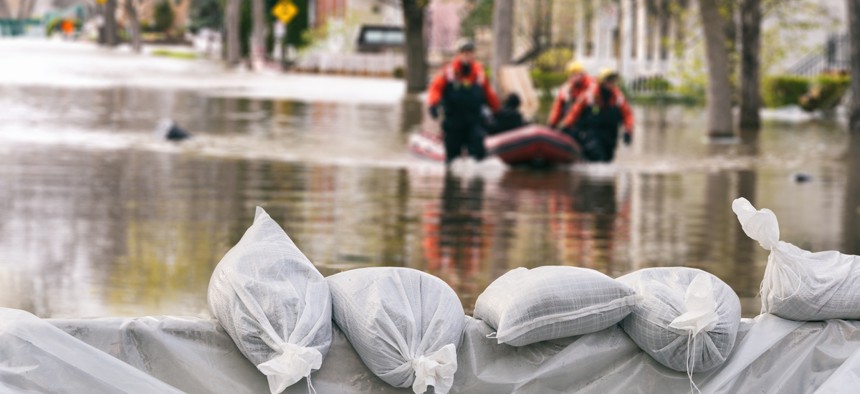Communities Lag in Resiliency Planning, Survey Finds

Flooding was the second-most common type of natural disaster, affecting 54.2 percent of responding communities. Shutterstock

Connecting state and local government leaders
A survey of city and county administrators found that more than half of communities had not completed or considered a long-term sustainability or resiliency plan.
Barely a third of local governments have completed long-term sustainability or resiliency plans, even in the face of increasing natural disasters, according to the results of a recent survey conducted by the International City/County Management Association.
The 2019 Disaster Resilience and Recovery Survey, conducted via email in October, asked municipal and county administrators 15 questions about preparation and recovery from natural disasters, including training, resilience and recovery plans, and financial resources. The goal, according to the survey results, was “to better understand the current disaster preparedness capacity of local governments, including alignment with practices recommended by the Federal Emergency Management Agency, as well as gaps to address.”
The survey received 901 responses from different-sized communities across the country. A majority of respondents had experienced a federally declared disaster within the last five years, with winter storms (affecting 60% of communities) ranking as the most common, followed by flooding (54%), hurricanes (27%) and tornadoes (19%). Just over 17% of respondents had experienced drought, while 14 percent had dealt with wildfires.
Almost all respondents (94%) were well-versed in applying for state and federal relief funds in the wake of a disaster, though only 58% of those had gone through the process within the last five years. About 81% of respondents also had access to general fund reserves or unrestricted funds to help support recovery efforts after a major disaster, while just 4% of communities said they had no financial resources currently identified.
The vast majority of communities had undergone some kind of planning to prepare for disasters, most commonly a hazard mitigation plan (83% of respondents had completed one, and another 7% were in the process). But barely a third—31%—of respondents had completed a long-term sustainability or resiliency plan, although 16% were in the process of doing so. More than half had not considered that type of plan. Fewer than 40% of respondents had implemented disaster training that includes post-disaster economic and community recovery and restoration scenarios.
That type of forward-thinking planning is increasingly important for cities as natural disasters become more common and federal and state funding continues to lag, according to Abena Ojetayo, chief resilience officer for the city of Tallahassee, Florida.
“For cities that keep their heads in the sand, the impacts of these shocks and stresses will ripple throughout the entire community in profound ways,” she wrote in ICMA’s 2019 Prediction on Disaster Recovery and Resilience. “For those that plan ahead and invest upstream, their efforts will be greeted with enthusiastic new partners from unlikely sectors and innovative financial resources.”
Kate Elizabeth Queram is a Staff Correspondent for Route Fifty and is based in Washington, D.C.

NEXT STORY: Death Penalty Used by an Increasingly Small Number of States




